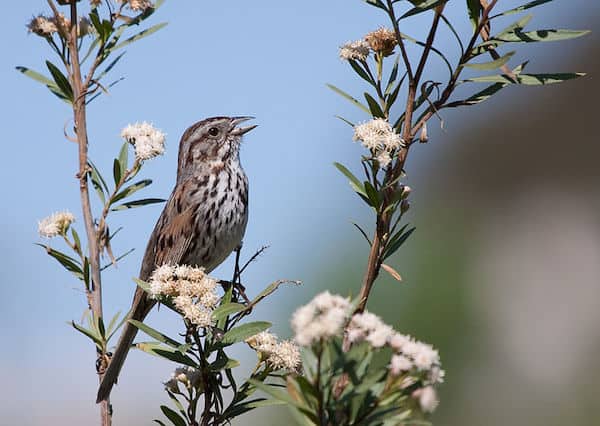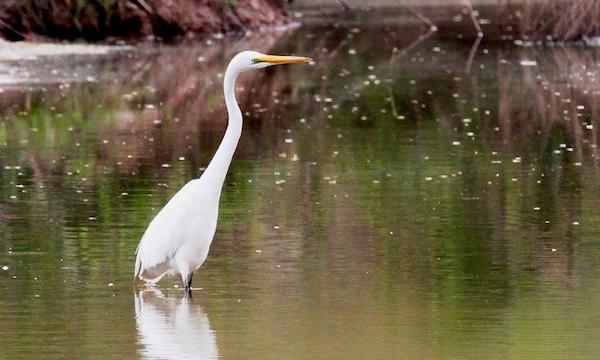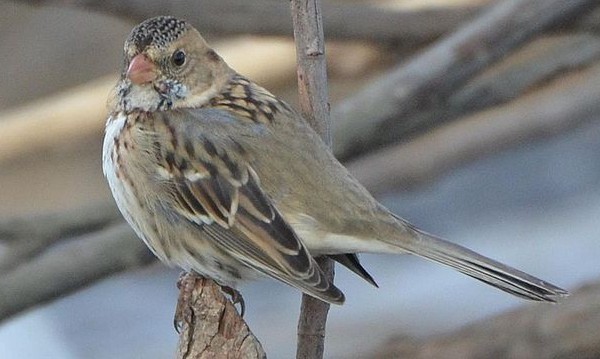Look For
The classic “little brown job,” the song sparrow has a heavily streaked white breast marked with a messy central spot. A grayish, striped face and crown and warm-brown upperparts complete the description. Flight is low and jerky, with the tail twisting distinctively. Males and females look similar.
Listen for
Persistent singing, often year-round, makes this a well-named species. If there’s a resident song sparrow in your yard, you’ll probably hear its cheery notes at first light—as reliable as, but more pleasant than, a rooster’s. The highly variable song usually starts out with three clear, slow notes, followed by a trill, some short buzzes, and a few more single notes, speeding up as it goes: sweet, sweet, sweet, brzzt, tititititititi, brrzzt, tee-tee-teer.
Find it
Though song sparrows occupy a wide range of habitats, they are most often found in shrubbery near water, from small streams to beach habitats. Song sparrows tend to be migratory in northern climes and year-round residents in the southern United States; this varies by population. The song sparrow is one of the most variable songbirds known. Populations in the Pacific Northwest, for example, are larger, darker, heavier-billed, and virtually unrecognizable compared to Southeastern coastal populations.
Feed it
The song sparrow’s diet varies seasonally, with insects being its primary prey in spring and summer and with seeds and fruits dominating in fall and winter. Most of the song sparrow’s foraging takes place on the ground, where it will scratch and kick about in leaf litter and grasses for weed seeds and insects.
Nesting Behavior
The persistent singing of song sparrows is linked to strong territorial behavior; where they are resident year-round, they tend to defend territories year-round. Territory boundaries are quite stable from year to year. Both sexes defend their territory, and they tend to stay with one mate.
Females construct a bulky nest of bark strips and weed and grass stems, well hidden deep in a dense shrub. Small, ornamental evergreens are irresistible to song sparrows. The female incubates three to five eggs for about 13 days. Young leave the nest at only 10 days and may be fed by the parents for the next 20 days before they are fully independent.
WOW!
Not all Song Sparrows look alike. There may be as many as 30 different forms of this species across the continent. Fortunately, all these Song Sparrows sing the same beautiful song.




